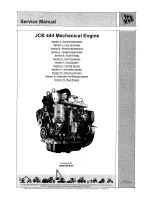
02A.8
Fluoride rubber products
02A.8.1 Handling instructions - normal sealing applica-
tions
In normal sealing applications the use of fluoride rubber products
does not cause any health hazards. The handling of products, e.g.
installation and service, can be made without any risk – provided
that normal industrial hygiene is applied.
02A.8.2 Handling instructions in case of overheated
seats and valve blow-by
When changing O-rings, for instance after a valve blow-by, opera-
tors handling the remains of burnt fluoride rubber must wear im-
penetrable acidproof gloves to protect the skin from the high
corrosive remains. Appropriate glove materials are neoprene or
PVC. All liquid state remains must be considered to be extremely
corrosive.
Neutralisation of the remains can be done by using large amounts
of calcium hydroxide solution (lime water). Used gloves must be
disposed off.
02A.8.2.1
Use of fluoride rubber products at temperature above
275 °C (527 °F)
Fluoride rubber can be used in most applications (up to 275 °C)
without any substantial degradation or health hazard. Use of or test
of fluoride rubber at temperatures above 275 °C must be avoided.
If the material, in spite of above recommendations, is exposed to
higher temperatures, or in case of an accident, there is a risk that
the temperature will rise out of control.
02A.8.3 Special conditions
02A.8.3.1
Grinding dust
Dust and particles which originates from grinding or abrasion (wear)
of fluoride rubber can cause the formation of toxic degradation
products when burned (incinerated). Smoking must therefore be
prohibited in areas where there is fluoride rubber dust and particles
present.
02A.8.3.2
Fire
In case of a fire, burning fluoride rubber can cause the formation of
toxic and corrosive degradation products (e.g. hydrofluoric acid,
carbonyl fluoride, carbon monoxide and carbon fluoride fragments
of low molecular weight)
Burning (incineration) of fluoride rubber is allowed only when using
approved incinerators equipped with gas emission reduction sys-
Appendix A
Environmental Hazards
200507
02A - 8
Summary of Contents for VASA 6L32
Page 4: ......
Page 18: ...Appendix B Welding Precautions 200640 00 6...
Page 26: ...01 Main Data Operating Data and General Design 32 200634 01 01 8 W RTSIL 32...
Page 60: ...Appendix A Environmental Hazards 200507 02A 10...
Page 68: ...Page 7 7 Document No 4V92A0645 Rev j...
Page 84: ...03 Start Stop and Operation 32 200402 04 03 12 W RTSIL 32...
Page 98: ...04 Maintenance Schedule 32 200623 01 04 14 W RTSIL 32...
Page 154: ...07 Tightening Torques and Use of Hydraulic Tools 32 200643 01 07 30 W RTSIL 32...
Page 162: ...08 Operating Troubles Emergency Operation 32 200402 01 08 8 W RTSIL 32...
Page 164: ...Specific Installation Data 2005 01 09 2...
Page 178: ...10 Engine Block with Bearings Oil Sump and Cylinder Liner 32 200150 10 14 W RTSIL 32 34SG...
Page 216: ...Appendix A Testing of cylinder tightness 32 200142 A 4 W rtsil 20 32 34...
Page 226: ...13 Camshaft Driving Gear 32 200546 02 13 10 W RTSIL 32...
Page 254: ...15 Turbocharging and Air Cooling 32 200549 10 15 20 W RTSIL 32...
Page 274: ...16 Injection System 32 200627 01 16 20 W RTSIL 32...
Page 280: ...Fuel System 32 200508 07 17 6 W RTSIL 32...
Page 314: ...19 Cooling Water System 32 200050 19 14 W RTSIL 32...
Page 394: ...23 Instrumentation and Automation 32 200115 II 23 60 W RTSIL 32...
















































